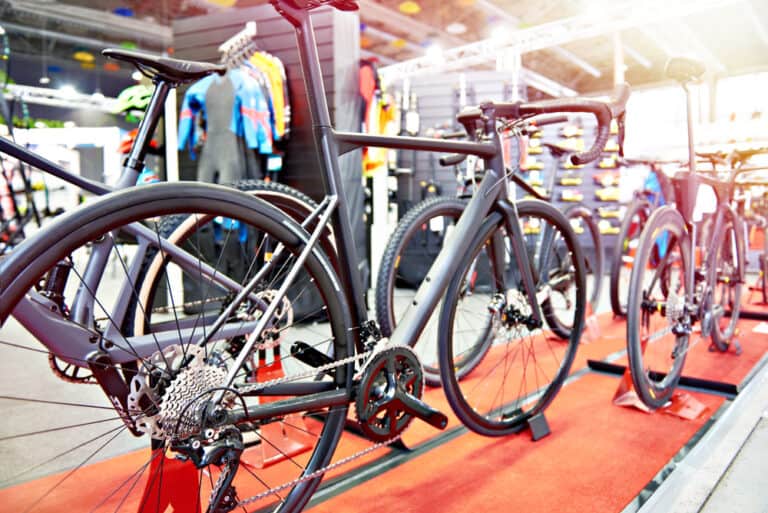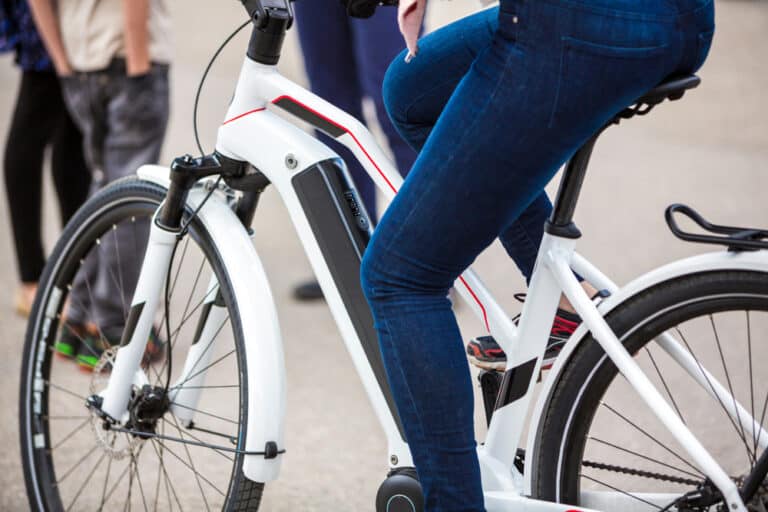Can You Ride A Bike Anywhere?

While cycling is a great sport or hobby for health, socializing, or fun, can you ride a bike anywhere? Cyclists frequently encounter traffic accidents, accidents with other cyclists, encounters with animals, theft, and dangerous weather or terrain.
You can’t ride a bike anywhere. It’s illegal to ride a bike in some places, and the laws and regulations vary between local governments. Riding in areas such as against traffic or on highways can be dangerous and illegal. Knowing local bicycle regulations is vital before riding in a new place.
Laws and regulations for cycling vary; some places have many areas demarcated as no-cycling zones, while others have dangerously few safety laws. With thousands of severe injuries and fatalities, each year from cycling, governments and athletic organizations have increasingly started to regulate the sport.
Is It Possible To Ride A Bike Anywhere?
You cannot ride a bike anywhere because some places are unsafe to do so and are often illegal as a result. Since the 1980s, bicycle law has been developing to keep drivers, riders, pedestrians and the environment safer. Attorneys specializing in bicycle law represent athletes and average cyclists regarding safety, law, contracts and accidents related to cycling.
While all local governments have their own set of laws restricting where it is safe and legal to ride, there are some places where it is almost always unsafe and illegal. The most common place where you can’t ride a bike is at certain speeds through school areas. Commercial areas also often have no-ride zones in place.
It is typically illegal to ride at night without lights on your bicycle or across pedestrian crossings and intersections when the light is red. It is also almost always illegal to cycle on a highway and against the direction of traffic.
Sidewalks are more complicated because it varies so much across local governments. It is often legal, but double-check because this is not the case everywhere. Although rare, some places have specifically outlawed riding bicycles in swimming pools.
Where Can’t You Ride A Bike?
There are some places where riding a bike is almost always illegal. First, cycling on a highway is usually not allowed and is always very dangerous. Even if no formal legislation exists against it in a particular area, it is still considered unsafe enough that it is advised against.
Secondly, cycling through an intersection is dangerous and illegal if the traffic light is red. As is the case with other vehicles, this is to prevent collisions. Failure to abide by this can lead to severe accidents, injuries, and even death.
Thirdly, never ride a bicycle over a pedestrian or zebra crossing. These are reserved exclusively for pedestrians to provide them with a safe way to cross the roads. It puts pedestrians in danger of traveling with bicycles, which can cause serious harm in a collision with pedestrians, particularly the elderly, children, or people with disabilities.
The same goes for cycling at night without lights. Many cycling-related injuries happen due to car drivers’ inability to see cyclists in the dark, resulting in accidents and deaths. Reflective jackets, bike tabs, and lights are critical for night-time cycling.
Interestingly, it has been made illegal to cycle in swimming pools in a few places. This results from cyclists riding bikes and getting injured in emptied pools or on pools frozen in winter. While this may not be illegal everywhere, it is dangerous and not recommended.
Where Can You Ride A Bike?
Almost always, cyclists can ride as near the right-most side of a road as they can. In most places, cyclists can also ride in the middle of two lanes of traffic, but this may vary on smaller roads with less space and does not apply to highways, on which it is almost always illegal to cycle.
Usually, you are allowed to ride a bike with two cyclists abreast. In other words, it is generally legal for two cyclists to ride next to one another. However, depending on local regulations, more than two cyclists may not always be permitted to ride side by side.
If there is a side path beside the road, these are usually optional. A common misconception is that cyclists must cycle there instead of on the road if there is a side path. However, this is untrue. Trails set aside for biking are ideal for any cyclist and will be indicated by signage.
Cyclists may ride through intersections as long as the traffic light is green. Additionally, anyone riding a bike must ensure that they depend on the direction of traffic on the road rather than against it. Regarding sidewalks, the legality of cycling on them varies primarily based on local laws. It is safer to look these up in an area before cycling on sidewalks.
If unsure whether you can cycle somewhere, take your cues from signage, especially on commercial, school or semi-private roads such as property estates. If there is no signage indicating a no-cycle zone and you are not cycling in a way that endangers yourself or others (such as driving through a red traffic light or at night without lights), you will likely be within the law.

Where Can You Find Out About Bike Laws?
If you are new to an area as a resident or visitor and would like to cycle but don’t know the local laws, there are three ways to make sure you’re cycling as a law-abiding citizen.
First, every local government should have a department related to transportation where they have outlined up-to-date local regulations, guidelines, and other cycling-related information. Often, it’s posted on a website or in a document uploaded and freely available.
Secondly, you can look for a local cycling league, association, or club. Sports clubs are trendy and often work with local government to create safer environments, better regulations, and improved infrastructure for their chosen sport. Cycling organizations will be able to provide you with all the information you need on where you can and can’t cycle.
Last, and if not least, physical signs will demarcate no-ride zones. When riding a bike in natural or urban areas, the local government must place easy-to-read, visible signs that communicate information to cyclists, such as no-ride zones, speed limits, and warnings. If you are unsure, keep an eye out for these.
Conclusion
Riding bicycles for fun or competitive purposes can be a fun and healthy activity. However, it comes with very high risks for your safety. Laws have been put in place to keep cyclists, pedestrians and drivers safe, and it’s essential to know your local government’s policies or legislation.







